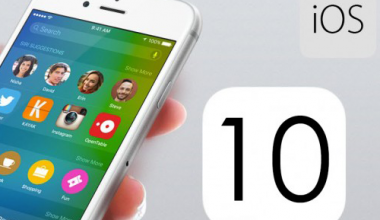LOS ANGELES — For Scott Lahman, Apple’s soon-to-launch iPad tablet computer could be the next big thing. Really.
His company, Gogii, produces the TextPlus app for the iPhone, which lets folks send text messages free, bypassing the phone network. It has been downloaded more than 5 million times.
The iPad, a 9.7-inch touch-screen computer that Apple touts as a multimedia e-reader and mobile Web surfer, is set to launch April 3, starting at $499. It is an understatement to say that Lahman, and thousands of other developers who created programs for the iPhone, are excited about the possibilities. “If there ever was a space to do some land-grabbing in, this is it,” says Lahman, Gogii’s CEO.
Since Apple (AAPL) launched the iPhone in 2007, developers have created some 150,000 software applications, or apps, which have been downloaded 2 billion times. They range from free, ad-supported text-message workarounds like Gogii’s, to games, restaurant locators, music services and GPS location assistance. While most will work fine on the iPad, developers are racing to optimize existing apps to take advantage of the larger screen, or to dream up new ones.
The iPhone spawned a $1 billion-a-year industry for app developers, says analyst Gene Munster of Piper Jaffray. He predicts first-year sales of 2.7 million iPads, compared with 4 million iPhones in the first year. The iPhone has grown to become a third of Apple’s business, says Munster. The iPad has the potential to represent 10% to 15% of Apple’s annual revenue by 2012, he says.
“The iPad isn’t a phone,” says Munster. “It’s a different animal.”
But for developers, even if the iPad sells only 1 million units in the first year, it still represents a huge market that’s either an add-on to the existing iPhone market or an all-new one.
“I’d rather be in early than sit back and wait and let my competitors get early traction,” says Ken Willner, CEO of Zumobi, a Seattle-based developer of ad-supported apps for big media brands including MSNBC and Today. “It’s a larger device, so it’s better for advertising.”
Sure, the iPad will have a smaller audience initially, he says, but so-called early adopters are “much more engaged.” Zumobi will have a revamped app for Motor Trend magazine ready at launch.
Consumers who have bought apps for their iPhones, or the iPod Touch, will not pay extra to access them on an iPad. But an app will appear in the smaller, 3-inch mode with a big black border unless the developer optimizes it for the larger screen. This presents developers with new opportunities.
“This is the iPhone moving into the living room,” says Bart Decrem, CEO of Tapulous. Its Tap Tap Revenge is one of the iPhone’s most popular games, with 25 million downloads. “In the short term, it’s an extension of the iPhone. In the long term, it’s a brand-new platform that will move eyeballs off gaming consoles and laptops.”
A simulating experience
Before the iPhone, creating software for mobile devices meant dealing with the Big 4 U.S. wireless companies — AT&T, Verizon Wireless, Sprint and T-Mobile— and hoping to break in with an app that would give the wireless carrier 50% of the cut.
Apple made a more generous offer for the iPhone. Developers create the software and submit it to Apple for approval for sale in the iTunes Store. Apple keeps 30% and handles administration duties, while the developer gets 70%.
The challenge for developers for the iPad: creating something for a device they can’t yet hold in their hands.
Apple is notoriously secretive, and with a few exceptions, has not released advance copies of the iPad for developers. Instead, they have to download simulation software from Apple’s website.
Developer Ge Wang, whose start-up Smule has created two multimillion-selling hits for the iPhone, has pre-ordered seven iPads and hopes they’re delivered on April 3. But he’s going to stand in line at his local Apple Store as well, just to be sure.
“The emulator is pretty close, but there are some things we just can’t do with it,” he says. “Once we have the iPad in our hands, we can access the physical touch surface, and for us that will be huge.”
Alex Peters and her team at Melbourne, Australia-based Firemint are going to extreme lengths to get their hands on an iPad to try to adapt Flight Control for the iPad. The iPad won’t go on sale in Australia until May at the earliest. So Peters is working with a local Aussie who’s flying to New York to buy as many iPads as he can.
Gogii’s Lahman says he was watching online when Apple announced the iPad, after weeks of rumors, at an event in San Francisco on Jan. 27. His initial thought: “I just lost another 200 hours of sleep for the next two months.”
He and his team downloaded the emulation software and have spent the last two months writing software code to adapt TextPlus for the iPad, adding pictures and other graphics to take advantage of the bigger screen.
Still, he has several iPads on pre-order and, like Wang, will also brave the lines at the Apple Store on April 3, because “You just don’t know until you get your hands on it how it’s really going to work.”
Fuel for tablets?
Tablet computers, despite previous attempts by Apple and by Microsoft and its partners, including Hewlett-Packard and Toshiba, have never caught on. As independent analyst Rob Enderle says, a tablet’s “too big to carry around with you.”
Faster, cheaper processing power, better software and improved colorful touch-screens have convinced manufacturers that the tablet’s time may finally have come. Lenovo and HP both have new tablets in the works for later in the year, and start-up JooJoo has one, as well.
While Apple CEO Steve Jobs calls the iPad “magical” and “revolutionary,” it will lack some hardware and software features found on any Windows computer.
Like the iPhone, the iPad doesn’t support Adobe’s Flash software, which is used to watch most online video. That mean videos at popular sites such as Hulu and ComedyCentral.com can’t be viewed, and neither can videos at thousands of other websites that rely on Flash.
Additionally, the iPad doesn’t have slots for common computer add-ons, such as, say, a USB flash drive or external hard drive. If you want to import your own video clips, for instance, you’re out of luck, unless you first put them in Apple’s iTunes software and transfer them from the computer, or figure a way to move them via the Web.
No Flash, no available slots, too big to fit into a pocket: Those are huge drawbacks, Enderle says.
“Developers are spending a lot of time hoping the iPad is going to be huge,” he says. “If they’re wrong, and Apple has guessed wrong, then they’ve just wasted a ton of time and money on a platform that fell. I’d focus on the iPhone. It’s not going anywhere.”
Try telling that to Tim Westergren, chief strategy officer for online radio service Pandora.
The iPhone turned the struggling, unprofitable Pandora into a company with $50 million in revenue last year. The Pandora app has seen 15 million downloads, and 70% of Pandora’s off-PC listening now comes from the iPhone.
Westergren believes anyone who underestimates the iPad is betting wrong.
“My instinct says this is the kind of device you don’t understand until you’ve held it and used it,” he says. “I see it as way more than an e-reader that brings books to life. It’s a people’s computer.”
When Jobs unveiled the iPad in January, he showcased it by showing an optimized version of The New York Times, taking advantage of the big iPad screen. Columns could be merged and adjusted, and videos could come to life.
Magazine publisher Condé Nast recently introduced an iPhone app for its GQ magazine, offering monthly issues for $1.99 a pop, and is working on optimized iPad versions that take advantage of the larger screen for GQ, Wired, The New Yorker, Vanity Fair and Glamour.
Pending Apple’s approval, it hopes to have the April issue of GQ available for sale on the iPad, with pricing to be announced.
USA TODAY will have an iPad app available on April 3. It will be free for the first 90 days, sponsored by Courtyard by Marriott. After that, USA TODAY will announce subscription pricing.
National Public Radio, meanwhile, saw a “tenfold” increase in its mobile traffic with the iPhone, says Kinsey Wilson, senior vice president, so it’s a natural that it wants to be on board with a newly optimized app for the iPad. He sees the iPad as another opportunity “to extend the listening day.”
To make sure that listeners get to hear NPR on their iPads, NPR had to take extra steps. NPR uses Flash to stream audio on its website, and because Apple doesn’t work with Flash, NPR has optimized its website to recognize iPad users, switching to a different software platform to present audio.
“This is the biggest challenge we faced, but one worth undertaking,” says Wilson. “The experience Apple is creating with touch navigation is one we think is going to be important, and we want to be there at the opening bell.”
Wilson, and the thousands of other iPad developers, will find out in two weeks if it pays to be early.
Resource:
http://www.usatoday.com/tech/news/2010-03-24-ipadapps24_CV_N.htm



